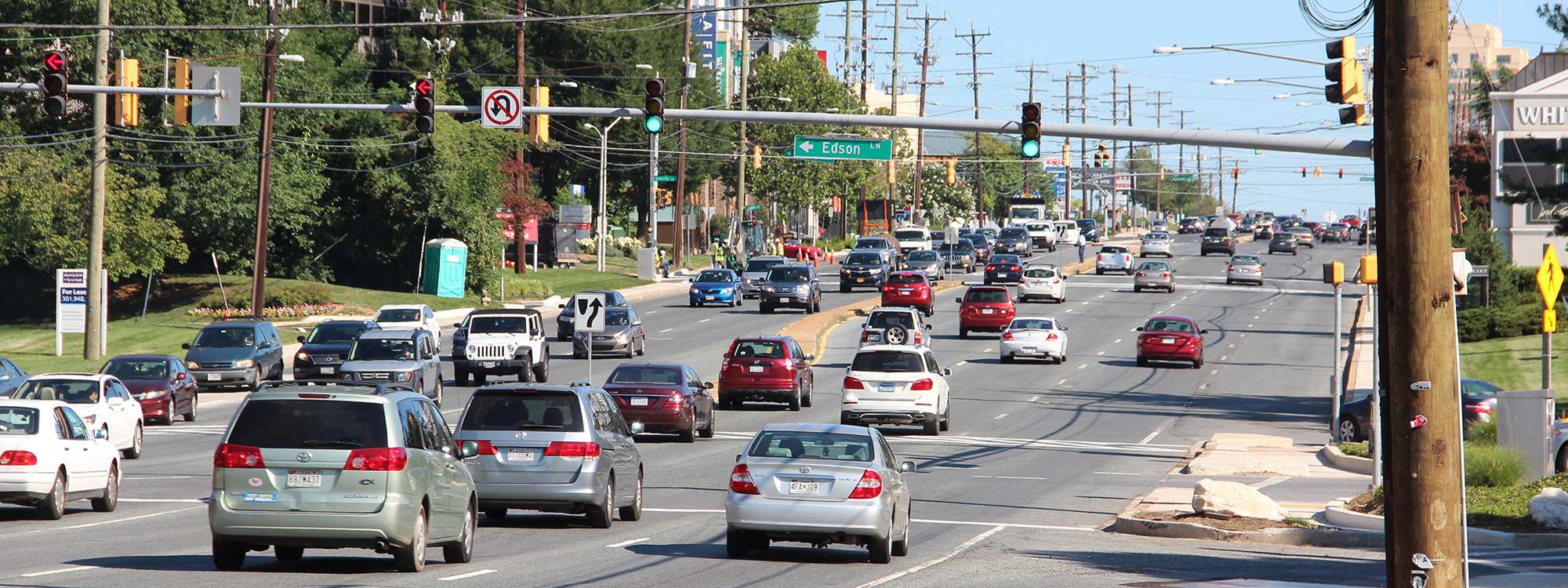
Predictive Safety Analysis’ provides county leadership with data-driven strategies to advance its Vision Zero goal of eliminating traffic-related deaths and severe injuries by 2030
Wheaton, MD – The Montgomery County Planning Department, part of The Maryland-National Capital Park and Planning Commission (M-NCPPC), briefed the Montgomery Planning Board on Thursday, July 21 at their meeting on the findings of a transportation safety study, the Predictive Safety Analysis, that uses data to estimate the number of crashes at all roadway segments and intersections in the county. The analysis will help county decisionmakers make targeted changes to the roadway network to advance the county’s goal to eliminate traffic-related deaths and severe injuries by 2030.
View the Predictive Safety Analysis Final Report
View the top 200 crash locations by crash type map
View the staff report from the July 21 Planning Board meeting
“The Predictive Safety Analysis is the first step towards implementing proactive approaches to improve traffic safety in Montgomery County,” said project manager, Jesse Cohn McGowan. “This marks a shift from primarily focusing in a reactive way on locations where crashes have occurred to more proactive and systemic approaches that identify and treat locations that have high risk for crashes in the future.”
The Montgomery Planning project developed formulas that estimate the number of crashes for common bicycle, pedestrian, and motor vehicle crash types. These formulas consider crash setting (urban, suburban, or rural), roadway characteristics (speed limits, traffic signals, and presence of crosswalks), and travel activity levels (the number of pedestrians, bicyclists, and motorists using a roadway or intersection).
The formulas are applied to determine the intersections and streets within the county with the greatest crash risk, as well as to identify effective countermeasures for improving safety. Some of these countermeasures include:
- Speed management — speed cameras, speed humps, lower speed limits
- Pedestrian crossings — highly visible or raised pedestrian crossings
- Intersection control — all-way stop control and traffic signals
- Signal timing — increased all-red clearance intervals (when all vehicle approaches have red lights), protected left turns, leading pedestrian intervals (giving pedestrians a three-to-seven-second head start before motorists enter the intersection)
- Other countermeasures — centerline rumble strips, more lighting
Key findings of Predictive Safety Analysis:
- Prioritization needs to look beyond crash history. Prioritizing safety improvements based solely on locations with a history of severe injury and fatal crashes could result in heightened crash risk. From 2015 to 2019, only 55% of crash-related fatalities and 46% of severe injuries occurred in the top 200 locations identified in the Predictive Safety Analysis. View the top 200 locations by crash type map.
- Much of Montgomery County’s crash risk is in the auto-oriented suburban areas. The county’s suburban areas and their high-speed, high-volume boulevards (such as Georgia Avenue and Veirs Mill Road) have the highest crash risk in the county for most crash types.
- Downtowns and town centers have the highest average crash risk. On a per-intersection or per-roadway-segment basis, crash risk is highest in the county’s urban areas (such as Silver Spring and Wheaton), particularly for pedestrian and bicycle crash types.
- Crash risk disproportionately impacts Equity Emphasis Areas (EEAs). EEAs are Census tracts with high concentrations of low-income individuals and/or racial and ethnic minorities. EEAs comprise less than 20% of county intersections and roadway segments, yet 32% of crashes and 29% of crashes resulting in death or severe injury occurred in these areas between 2015 and 2019. This disparity is greatest for the pedestrian crash types, where EEAs have over 200% higher average crash risk than non-EEAs. Focusing investments in EEAs can mitigate this disparity and balance crash risk in the county.
For a more detailed review of the findings and potential ways to apply the study’s results to improve traffic safety, please view the full Predictive Safety Analysis report. There is also a dedicated webpage that further explains the Predictive Safety Analysis.
About Montgomery Planning and Vision Zero
Vision Zero is a proven approach to preventing roadway-related deaths and severe injuries. It represents a fundamental change in how we plan and design our roads, shifting from a focus on maximizing motor vehicle efficiency to ensuring that our roads are safe regardless of whether travel is by car, bus, bicycle, or on foot. Vision Zero recognizes that people will sometimes make mistakes and that our roads should be designed to ensure those inevitable mistakes do not result in severe injuries or fatalities.
Through its 2016 County Council resolution, Montgomery County committed to eliminating traffic fatalities and severe injuries. In 2021, the County Executive released a ten-year action plan to eliminate traffic fatalities and severe injuries by 2030.
The Planning Department’s Role in Vision Zero
Vision Zero is a multidisciplinary effort that requires the support of all county agencies to be successful. The Montgomery County Planning Department has an important role to play in Vision Zero and can support Montgomery County’s program with community engagement, stakeholder facilitation, data analysis and a focus on long-term visioning. Montgomery Planning advances Vision Zero through the following ongoing activities:
- Master Planning: Through master planning, Montgomery Planning engages the community to re-envision our auto-oriented roadways as safe, complete streets for walking, bicycling and driving.
- Development and Capital Projects: The Montgomery County Planning Board helps to implement the safety recommendations in master plans by reviewing proposed development and capital projects.
- Data Analysis: The Planning Department has extensive data collection and analysis resources to identify roadway characteristics that create safety challenges and to propose proven changes to improve safety.
- Community Support and Engagement: Montgomery Planning provides support for building a Vision Zero constituency in the county.
Learn more at: montgomeryplanning.org/visionzero